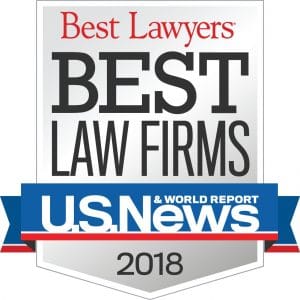Welcome to our latest legal guide at Rush & Gransee, where we delve into the complex and often misunderstood world of embezzlement. This crime, which involves the misappropriation or theft of funds placed in one’s trust or belonging to one’s employer, can carry serious ramifications under both state and federal law. Our aim with this blog post is to unravel the intricacies of embezzlement, providing you with a clear understanding of what constitutes this offense, how it is prosecuted, and the potential defenses that might be available.
Whether you are an employer concerned about safeguarding your assets, an employee accused of embezzlement, or simply someone interested in understanding more about this serious financial crime, this guide will offer valuable insights and practical advice.
Criminal Defense Success
What is Embezzlement?
Embezzlement refers to the act of wrongfully appropriating funds or property that have been entrusted to one’s care but are owned by someone else. Unlike theft, where the property is taken without permission, embezzlement involves a lawful possession initially but turns unlawful when the property is used or taken for the perpetrator’s gain without the owner’s consent.
Under Texas law, embezzlement is not defined as a separate crime; instead, it falls under the broader category of theft. According to the Texas Penal Code Section 31.03, theft includes unlawfully appropriating property with intent to deprive the owner of the property. The distinction that typically characterizes embezzlement is the violation of a fiduciary duty or trust relationship between the person taking the property (the embezzler) and the property’s owner.
How Embezzlement Happens
Embezzlement can occur in various ways, often depending on the embezzler’s job position, the nature of the funds or property, and the opportunities available. Common scenarios include:
– An employee using company funds for personal expenses.
– A financial officer manipulating accounting records to hide the theft of money.
– A trustee or estate executor misusing assets that should be managed on behalf of another.
In each case, the crucial element is that the individual had legal access to the funds or property but exceeded their authority for personal benefit.






Legal Consequences of Embezzlement in Texas
The consequences of embezzlement in Texas depend on the value of the property stolen and can range from a misdemeanor to a felony. For instance:
Less than $100: Class C misdemeanor, punishable by a fine of up to $500.
$100 to less than $750: Class B misdemeanor, punishable by up to 180 days in jail and a fine of up to $2,000.
$750 to less than $2,500: Class A misdemeanor, punishable by up to one year in jail and a fine of up to $4,000.
$2,500 to less than $30,000: State jail felony, punishable by 180 days to 2 years in a state jail and a fine of up to $10,000.
$30,000 or more: The offense ranges from a third-degree felony to a first-degree felony, with penalties increasing substantially with the amount involved.
Types of Embezzlement
Corporate Embezzlement
Corporate embezzlement occurs within the confines of a company or business entity. Employees or executives with access to company funds might divert these for personal use, manipulate financial statements, or misreport expenses. Common examples include a financial officer inflating expenses and pocketing the difference or an employee issuing unauthorized company checks to themselves.
Accounting Embezzlement
This type of embezzlement involves tampering with accounting records to hide theft of funds. It can range from complex schemes like “lapping” (using funds from one client to cover misappropriated funds from another) to simple falsification of expense reports. Accounting embezzlement requires a detailed understanding of the company’s financial systems and is often perpetrated by individuals with accounting responsibilities.
Payroll Embezzlement
Payroll embezzlement happens when employees responsible for payroll processing manipulate the system to issue payments to nonexistent employees (often called “ghost employees”) or inflate their own salaries. This type of embezzlement can also include forging overtime hours or manipulating wage records.
Legal Embezzlement
In scenarios where individuals are in legal control of someone else’s assets, such as trustees, guardians, or attorneys, embezzlement can occur if they illegally use those assets for personal gain. This is particularly egregious given the fiduciary duty involved in these roles.
Data Embezzlement
With the digitalization of financial transactions, data embezzlement has become more prevalent. It involves the unauthorized use of digital information — like customer credit card details or personal identification numbers — for theft or fraud.






Investigating and Prosecuting Embezzlement
Embezzlement can often go undetected for years, only coming to light through various scenarios. One common way embezzlement is uncovered is through routine audits. Regular and thorough audits conducted by either internal or external auditors can reveal discrepancies that suggest the presence of embezzlement. Another way embezzlement may be discovered is through whistleblowers. Employees or associates who notice irregularities might report their suspicions to management or directly to law enforcement. Additionally, financial institutions may flag unusual transactions that do not align with the normal business pattern and report these to the business owner or authorities. Sometimes, suspicions of embezzlement arise when an employee suddenly displays a level of wealth that is inconsistent with their income.
Investigative Techniques
Once potential embezzlement is identified, a detailed and methodical investigation follows, employing various techniques. Specialists in forensic accounting are often brought in to examine financial records, trace fund flows, and identify discrepancies that are not evident during standard audits. Law enforcement may use surveillance techniques to gather evidence of wrongdoing or to monitor the suspect’s behavior and communications. Investigators conduct detailed interviews with the suspect, co-workers, and other relevant individuals, providing insights into the suspect’s activities and uncovering further evidence. In today’s digital age, a significant amount of evidence is stored electronically, so investigators use digital forensic techniques to recover deleted files, access email records, and trace computer logins and activities. Additionally, law enforcement will obtain court orders to review bank accounts, transaction histories, and other financial records that can link the suspect to the embezzlement activities.
Evidence for Prosecution
In an embezzlement case, the prosecution must present clear, comprehensive, and compelling evidence to secure a conviction. This evidence must demonstrate beyond a reasonable doubt that the suspect had the intent to defraud. Intent is crucial as it distinguishes embezzlement from innocent mismanagement of funds. Additionally, it must be shown that the suspect had legal access to the money or property but did not have legal ownership of it.
The evidence must also clearly illustrate how the funds were misappropriated. This could include personal purchases, unauthorized transfers, or deposits into personal accounts. Furthermore, it must be proven that the suspect’s actions breached the trust placed in them by the employer or rightful owners.
Witness testimony, financial documents, electronic records, and forensic findings must all corroborate the narrative that the suspect intentionally misappropriated the funds.
Defense Strategies in Embezzlement Cases
Embezzlement charges can be profoundly serious, often carrying significant penalties and long-lasting repercussions on a person’s professional and personal life. Successfully defending against these charges requires a deep understanding of both financial laws and strategic legal defense. Below is a sampling of defense strategies that can be employed in embezzlement cases.
Lack of Intent
A key element in embezzlement is the intent to commit fraud. One of the most potent defenses is proving that the accused did not have fraudulent intentions. This can involve demonstrating that there was a misunderstanding or miscommunication regarding the use of the funds, which led to them being used inappropriately without the intent to steal. For example, if an employee believed they had permission to use company funds for a particular purpose, this could negate the intent to commit fraud.
Good Faith Belief
Related to lack of intent, asserting that the defendant had a good faith belief that they were entitled to the property or funds in question can be a credible defense. This might apply in situations where the boundaries of ownership or permission were not clearly defined, or there was a reasonable belief of entitlement due to past practices or verbal agreements.
Duress
Claiming duress involves proving that the defendant was forced to commit the act under threat of violence or some other form of coercion. Evidence of threats, blackmail, or other pressures that led the defendant to embezzle funds can potentially absolve them from liability if they can show they acted under conditions that left them no reasonable alternative.
Incapacity or Mistake
In some cases, demonstrating that the embezzlement was the result of a genuine error rather than intentional fraud can be effective. This might include situations where an individual accidentally misallocated funds due to confusion or misunderstanding of financial documents or systems.
Insufficient Evidence
A defense may also focus on the insufficiency of the prosecution’s evidence. Embezzlement cases often rely heavily on complex financial data and interpretations that can be challenged. A defense attorney might argue that the evidence does not meet the standard of proof required to establish that embezzlement occurred or that it is too ambiguous to lead to a definitive conclusion.
Entrapment
Although less common, entrapment occurs when a government official or entity induces a person to commit a crime that they would not have otherwise committed. If it can be demonstrated that the defendant was persuaded or lured into committing embezzlement by someone looking to arrest and prosecute them, this defense can be utilized.
Statute of Limitations
For some white-collar crimes, including embezzlement, there is a specific timeframe within which charges must be brought. If this statute of limitations has expired, the defense can argue that the prosecution is barred from proceeding with the case.
Protecting Texans
Embezzlement is a complex charge that carries serious consequences and demands a sophisticated defense strategy. Understanding the nuances of your specific case and the legal protections available is crucial to navigating these challenging waters. Whether you’re just starting to grapple with accusations or you’re already deep in the legal process, obtaining representation can significantly impact the outcome of your case.
At Rush & Gransee, our team is experienced with dissecting financial transactions, challenging prosecutorial evidence, and defending your rights with tenacity. If you or someone you know is facing embezzlement charges, don’t face them alone. Contact Rush & Gransee today to schedule a consultation. Let us help you build a strong defense and work towards the best possible resolution. Early intervention is key in these cases, so reach out today.


